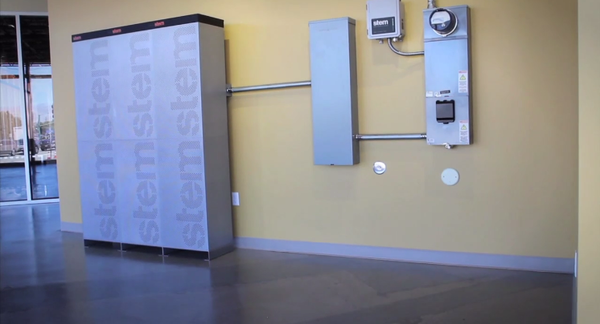Here's a Great Idea: Power Storage With No Cash Upfront

Rooftop solar really started taking off in California when third-party leasing companies offered property owners a way to go solar without laying out any cash up front. Now, a startup is bringing that leasing model to a wholly different renewable energy realm: decentralized power storage.
Stem, a Bay Area-based firm working in the electrical power storage field, has launched a venture that will lease power storage capacity to businesses. Stem's equipment will allow businesses to reduce their power consumption from the grid at peak times, offering electric bill reductions of between 10 and 40 percent -- and helping the power grid avoid uncomfortable shortfalls of power during peak periods.
Best of all, Stem leases their storage banks to firms with no money upfront, and lease payments are at least partly offset by significantly reduced power bills. Which should make the whole prospect much more attractive to businesses looking to take control of their power consumption.
In order to bankroll the equipment it will be leasing, Stem has acquired up to $5 million in financing from Clean Feet Investors. Stem representatives say the capital will allow the company to deploy 15 megawatt-hours worth of storage. A typical installation is expected to run about 54 kilowatt-hours in capacity.
Stem's customers will store power either taken from the grid during off-peak hours or from on-site generation such as solar or combined heat and power. A computer control network will manage the system with no change in power use behavior necessary, though the firm's "PowerScope" software package provides a handy customer user interface to the system, allowing analysis of power use habits to encourage further conservation and savings.
And each storage system is installed "behind the meter," essentially leaving the local utility out of the loop.
Stem's existing customers include San Francisco's Mark Hopkins hotel and the Morgan Hill headquarters of the mountain bike firm Specialized. With this round of funding, that roster should grow considerably -- a good thing for Stem and its customers, and for the stability of California's power grid. We don't cheerlead much here at ReWire, but we're just really not seeing a downside to this.


